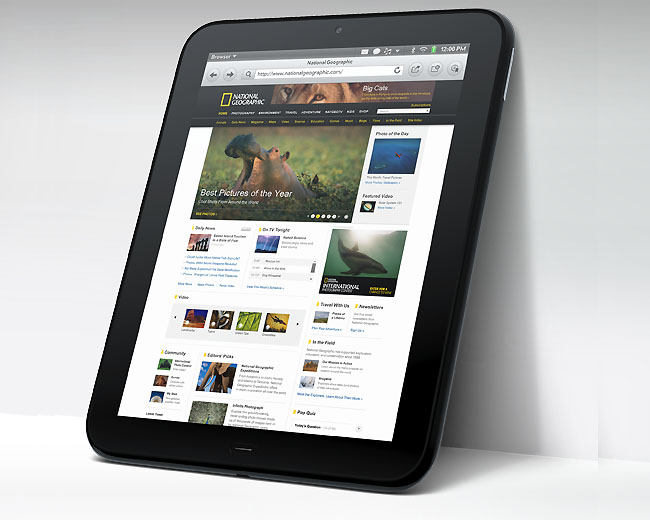It’s been a long time coming, but technology giant Hewlett-Packard has finally revealed its entry into the consumer tablet marketplace, announcing its much-anticipated HP TouchPad will go on sale to U.S. customers on July 1, with pre-orders available June 19. The TouchPad will be a bit unline other tablet devices on the market: it doesn’t run Android or Apple’s iOS, but instead is built on the webOS operating system that HP acquired along with Palm over a year ago. A 16 GB version will be available for $499.99, and a 32 GB version will run $599.99—prices right in line with Apple’s current iPad 2 line. Initially, the TouchPad will be Wi-Fi only: Hewlett-Packard says it is working with AT&T to bring a 3G-enabled version to market “later this summer.”

“What makes HP TouchPad a compelling alternative to competing products is webOS,” said HP’s senior VP and general manager for Palm Jon Rubinstein, in a statement. “The platform’s unmatched features and flexibility will continue to differentiate HP products from the rest of the market for both personal and professional use. This is only the beginning of what HP’s scale can do with webOS.”
The HP TouchPad is powered hby a Qualcomm Snapdragon dual-core APQ8060 processor running at 1.2 Ghz and features a 9.7-inch 1,024 by 768-pixel touchscreen display (sound familiar?), a front-facing 1.3 megapixel webcam, 802.11b/g/n Wi-Fi and Bluetooth 2.1+EDR wireless networking. The systems also feature the usual gamut of tablet sensors , either 16 or 32 GB of onboard storage, and the forthcoming 3G-capable models will also feature assisted GPS. The TouchPads also sport stereo speakers with Beats Audio technology.
Palm’s webOS brings some unique capabilities to the TouchPad—and some of those work alongside Pre smartphones. Users will be able to share Web sites back and forth between TouchPads and Pres just by touching them together: the Web site will transfer from one device to the other without the need for users to re-surf. HP says it’s also working to make touch-sharing work across a broader range of HP devices. HP’s webOS also features full multitasking capabilities and a “Just Type” feature that enables users to start a message, status update, or search by starting to type—there’s no need to launch an app first. The TouchPad’s browser wlaos supports both HTML5 and Adobe Flash (a beta of Flash 10.1), so users can get “all of the Web.”

The downside for the TouchPad for some consumers may be the availability of apps: Palm’s webOS has not seen the explosive app development community that’s emerged around iOS and Android, although a growing number of apps are available for webOS devices, including usual suspects like Angry Birds, last.fm, and (of course) Facebook.
HP will also be marketed TouchPad accessories, including the HP Touchstone charging dock (no cables required!), a wireless keyboard, and a TouchPad case.
HP will also be launching the TouchPad in France, Germany, Ireland, and the UK within a few days of July 1, in Canada by mid-July, and in Australia, Hong Kong, Spain, Italy, New Zealand, and Singapore “later this year.”
The TouchPad marks HP’s first real attempt to capitalize on webOS outside of the smartphone arena, and also marks the company’s first foray into the consumer tablet market. The mobile industry will be watching carefully to see how consumers response to the TouchPad, along with HP’s future offerings that support unique webOS capabilities.



